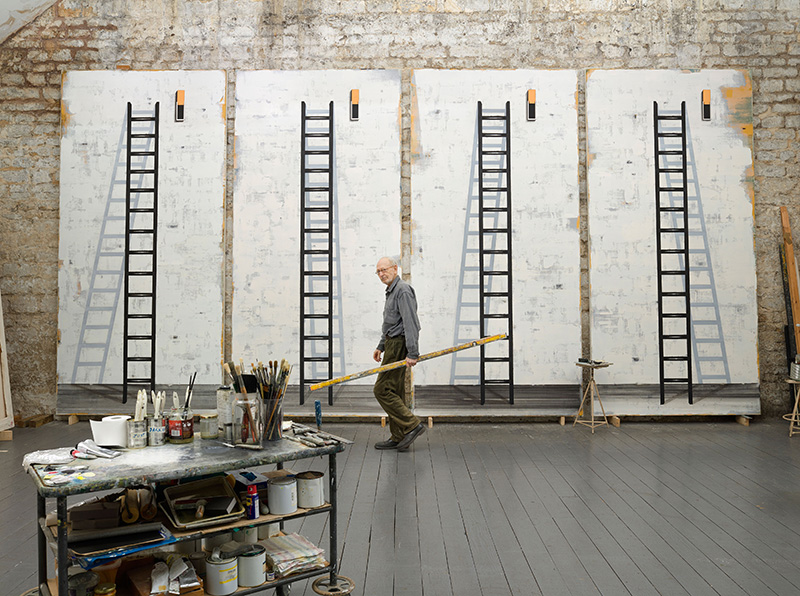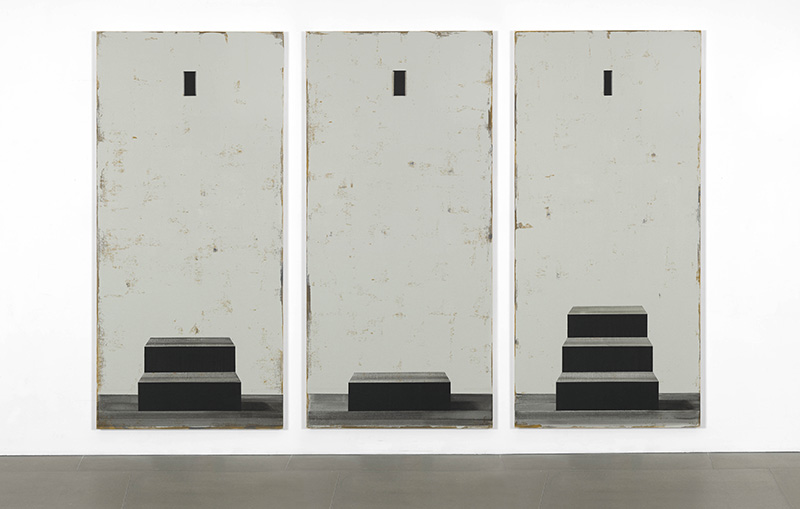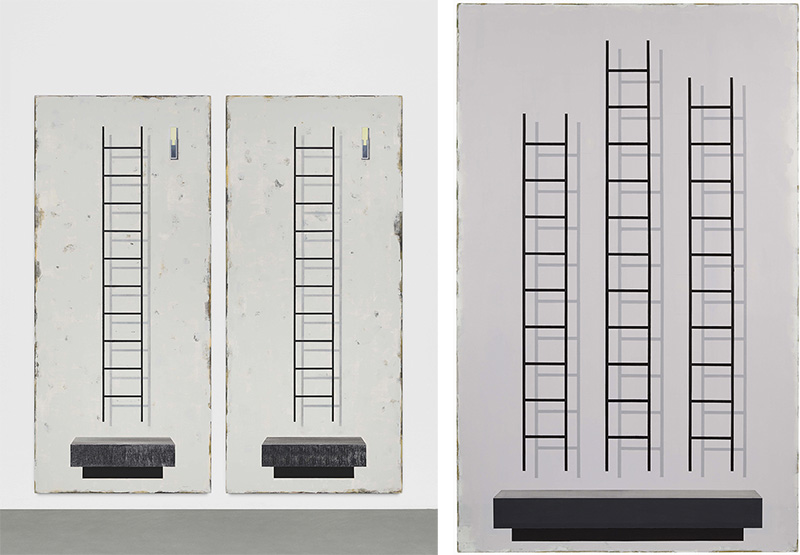ART CITIES:Berlin-Michael Simpson
 For the past three decades Michael Simpson has explored ideas relating to what he describes as “The infamy of religious history”. Rooted in a fascination with 15th Century Venetian and early Flemish Painting, and inflected by the formal restraint and reduced palette of Minimalism, Simpson had developed a distinctive, darkly comedic artistic vocabulary with which to create works that move beyond their subject matter to question the nature of painting itself.
For the past three decades Michael Simpson has explored ideas relating to what he describes as “The infamy of religious history”. Rooted in a fascination with 15th Century Venetian and early Flemish Painting, and inflected by the formal restraint and reduced palette of Minimalism, Simpson had developed a distinctive, darkly comedic artistic vocabulary with which to create works that move beyond their subject matter to question the nature of painting itself.
By Dimitris Lempesis
Photo: Blain|Southern Gallery Archive
“SQUINT” is the title of the first solo exhibition in Germany by Michael Simpson. The artist presents a significant body of new work, including drawings, large-scale canvas paintings and a four-part polyptych over 3m high and 7m wide. Over the last thirty years Simpson has focused on just two series, “Bench Paintings” (1989-2009) and “Squint” (2009- ). Simpson is critical of what he sees as the cruelty of organized religion, exemplified by Bruno’s persecution, depicted in his “Squint” series is the architectural legacy of institutionalised exclusion. Squint relatse to an architectural feature of medieval churches, a tall, slim opening in a wall which allowed leper’s to observe religious services without contaminating the wider congregation. In each of the quint paintings we the viewer are placed in the position of the leper, facing a structure, a ladder or steps we are left to wait and wonder what, if anything lies beyond the squint. By focussing on the structure and formal elements of the painting, Simpson asks how a flat surface can conjure an illusion of space. And he takes that idea further to ask why we derive so much pleasure from that illusion? If illusions of physical depth propose metaphysical depth, what might that imply about the structure of our perceptions, our tendency to believe? Simpson’s ladders might suggest that there is no way to lift ourselves beyond the constraints of sense perception, and that our belief systems must be kept in check by acknowledging these limits. To look at many of Simpson’s paintings is to see-saw between abstraction and representation, between depth and flatness. The artist’s key motifs are reduced to their essential geometry and situated in similarly pared-down environments. Forms float, apparently suspended in space; elsewhere light, shadow and perspective root objects to the ground. Similarly, the precisely wrought illusion in some works gives way to a much looser rendering of the image in others. The use of larger than life-size scale of many of these works engenders a strong physical engagement; a sense that we could literally step into these exact yet indeterminate spaces. Simpson calls attention to the mechanics of painting, the deceptive force of the constructed image.
Info: Blain|Southern Gallery, Potsdamer Straße 77–87 (Mercator Höfe), Berlin, Duration: 16/9-28/10/17, Days & Hours: Tue-Sat 11:00-18:00, www.blainsouthern.com


Right: Michael Simpson, Squint 55, 2017, Photo: Peter Mallet, Courtesy the artist and Blain|Southern

Right: Michael Simpson, Squint 51, 2017, Photo: Trevor Good, Courtesy the artist and Blain|Southern
